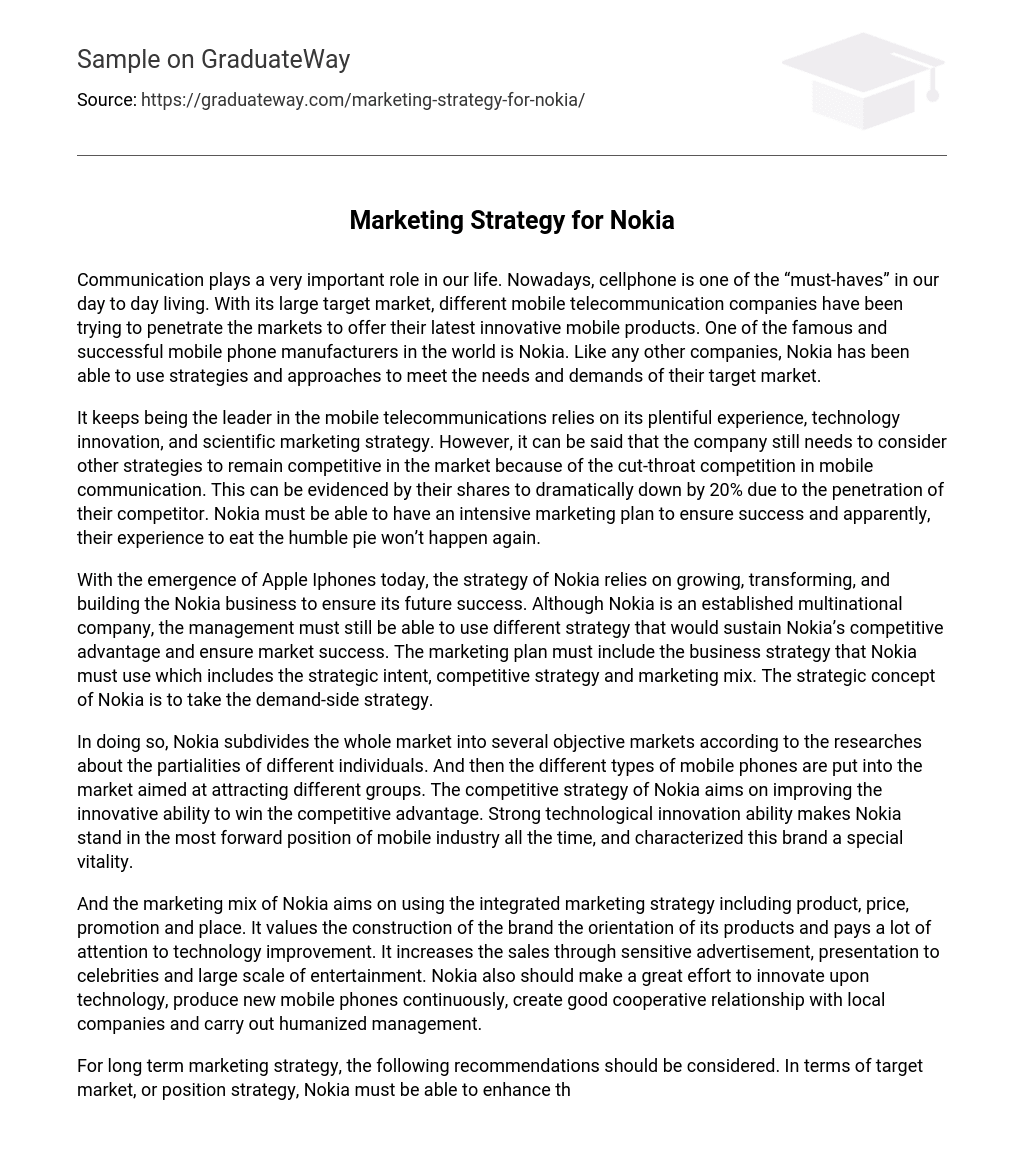Communication is crucial in our daily lives, with cellphones being an essential possession. Numerous mobile telecommunications companies strive to capture the market by providing innovative mobile products. Among the successful global manufacturers is Nokia, which employs strategies to cater to their target market’s needs and preferences.
Nokia, despite its wealth of experience, technological innovation, and scientific marketing strategy, is encountering strong competition in the mobile telecommunications industry. Consequently, a 20% decrease in the company’s shares has been witnessed as a result of the emergence of a formidable rival. In order to maintain competitiveness, Nokia must examine alternative strategies and adopt an extensive marketing plan to secure future triumphs. It is imperative for Nokia to assimilate lessons from previous setbacks and prevent any recurrence of similar setbacks going forward.
Nokia’s strategy for future success revolves around the growth, transformation, and development of their business, in response to the emergence of Apple iPhones. Being an established multinational company, Nokia’s management acknowledges the need for a different strategy that will maintain their competitive advantage and ensure market success. The marketing plan should incorporate the business strategy, including strategic intent, competitive strategy, and marketing mix. Nokia’s strategic approach focuses on adopting a demand-side strategy.
In order to cater to the preferences of diverse individuals, Nokia divides the market into various segments based on research. Consequently, Nokia releases different mobile phone models targeted at attracting specific groups. Nokia’s competitive strategy focuses on enhancing its ability to innovate in order to gain a competitive advantage. The brand consistently maintains a leading position in the mobile industry due to its strong technological innovation capabilities, which infuses the brand with a distinct vitality.
Nokia embraces an integrated marketing mix strategy, encompassing product, price, promotion, and place. The brand prioritizes brand building, product development, and technological advancements. Sales are boosted through targeted advertisements, celebrity endorsements, and diverse entertainment options. Moreover, Nokia places a high value on technology innovation by regularly launching new mobile phones and forging robust partnerships with local companies. Additionally, the company upholds a management approach that accentuates interpersonal connections.
In the process of developing a long-term marketing strategy, Nokia should take into account the following suggestions. The primary objective is to concentrate on appealing to a particular demographic that possesses both the financial resources and enthusiasm for their offerings. This approach will aid in the establishment of a specialized market for Nokia’s business and the successful promotion of their concepts and products.
Nokia is primarily focused on identifying additional applications for their product, which can be relatively straightforward for food products but more complex for functional items such as mobile phones. Targeting non-users presents another potential strategy for the company. Many companies opt to pursue a dual approach by appealing to both existing users and potential non-users.
To assess the potential market among non-users, a market penetration study called the Usage, Attitude, and Image (UAI) study is necessary. This study helps evaluate opportunities beyond the company’s current market. Nokia must employ diverse strategies and approaches to meet the needs and demands of consumers and remain competitive in the market.





